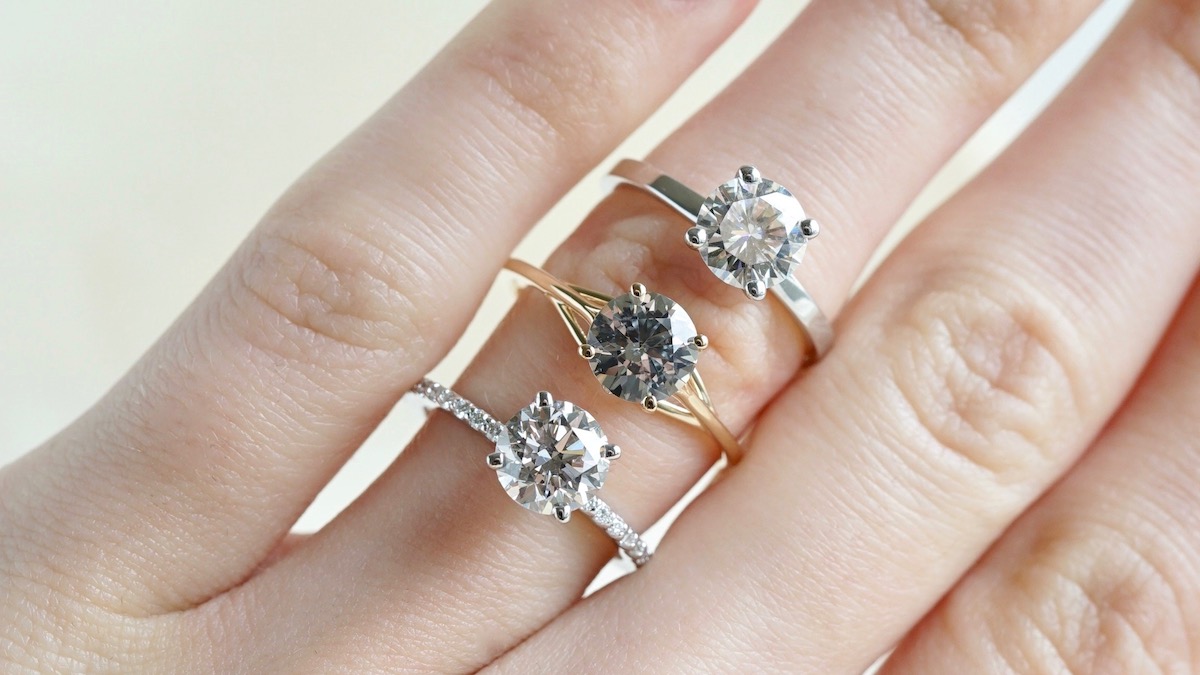Guide to Buying Lab Diamonds

What Are Lab Diamonds?
If you’re considering a diamond purchase, you’ve likely come across the term “buy lab diamonds.” But what exactly are they? Lab diamonds, also known as synthetic or cultured diamonds, are gemstones created in controlled environments using advanced technology that replicates the natural processes of diamond formation.
The Science Behind Lab Diamonds
Lab diamonds are made using two primary methods: High Pressure High Temperature (HPHT) and Chemical Vapor Deposition (CVD). Both processes produce diamonds that are chemically, physically, and optically identical to natural diamonds. They’re real diamonds; just grown in a lab instead of formed over millions of years in the earth’s crust.
Differences Between Lab Diamonds and Natural Diamonds
While lab diamonds and natural diamonds share the same characteristics, they come with significant differences. Natural diamonds are mined, which raises concerns about environmental and ethical implications. In contrast, lab diamonds offer a sustainable alternative, free from the negative stigma sometimes associated with diamond mining.
Benefits of Buying Lab Diamonds
Cost-Effectiveness
One of the most appealing aspects of lab diamonds is their price point. Generally, you can expect to pay 20-40% less for a lab-grown diamond compared to a natural counterpart. This means you can either save money or choose a larger or higher-quality diamond for the same budget.
Ethical Considerations
Buying lab diamonds means you’re making an ethical choice. With growing awareness about “blood diamonds” and their link to conflict, many buyers prefer lab diamonds as they’re sourced responsibly without contributing to social or environmental harm.
Quality and Variety
Lab diamonds come in a wide range of sizes, shapes, and qualities. Whether you’re looking for a classic round cut or a unique fancy shape, you’ll find plenty of options. Plus, lab made diamonds are often more consistent in quality than natural diamonds, making your selection easier.
How to Choose Lab Diamonds
Understanding the 4Cs
When buying any diamond, understanding the 4Cs—Carat weight, Cut quality, Color grading, and Clarity grade—is crucial.
Carat Weight
Carat weight refers to the size of the diamond. Keep in mind that a larger carat weight generally means a higher price, but how it looks also depends on cut quality.
Cut Quality
The cut of the diamond is essential for its sparkle. A well-cut diamond will reflect light beautifully, while a poorly cut diamond can appear dull, regardless of its carat weight.
Color Grading
Color grading ranges from D (colorless) to Z (light yellow or brown). For most people, diamonds graded G-H offer the best value, appearing near colorless in most settings.
Clarity Grade
Clarity measures the presence of inclusions and blemishes. A higher clarity grade means fewer visible imperfections. However, many inclusions are microscopic and won’t be noticeable without magnification.
Choosing the Right Shape
Beyond the 4Cs, consider the diamond shape that appeals to you. Round, princess, oval, and cushion are just a few popular shapes, each offering a unique look.
Where to Buy Lab Diamonds
Reputable Online Retailers
Many online retailers specialize in lab-grown diamonds. Look for companies that offer detailed information about their diamonds, including certification and return policies. Popular options include James Allen, Brilliant Earth, and MiaDonna.
Local Jewelers
Some local jewelers now carry lab-grown diamonds, so don’t hesitate to visit and check their inventory. This allows you to see the diamonds in person and ask questions directly.
Lab Diamond Certification
Why Certification Matters
Just like natural diamonds, lab diamonds should come with certification from reputable gemological laboratories. Certification verifies the diamond’s quality and characteristics, giving you confidence in your purchase.
Understanding Certification Reports
Certification reports detail the 4Cs of the diamond, ensuring you know exactly what you’re getting. Look for reports from reputable labs like the GIA, AGS, or IGI for reliable information.
Common Myths About Lab Diamonds
Myth: Lab Diamonds Are Inferior
One of the most common misconceptions is that lab diamonds are of lower quality than natural diamonds. In reality, lab diamonds can often be of superior quality due to controlled growth environments.
Myth: Lab Diamonds Aren’t Real Diamonds
Another myth is that lab diamonds aren’t “real” diamonds. However, lab diamonds are composed of the same carbon atoms as natural diamonds, making them equally real and beautiful.
Caring for Your Lab Diamonds
Cleaning and Maintenance Tips
To keep your lab diamonds sparkling, regular cleaning is essential. Use a gentle soap solution and a soft brush to remove dirt and oils. Avoid harsh chemicals, as they can damage the setting or the diamond itself.
Conclusion: Making the Right Choice
Buying lab diamonds is an exciting journey that combines beauty, ethics, and affordability. By understanding what lab diamonds are, their benefits, and how to choose the right one, you can make an informed decision that suits your style and values. Whether you’re searching for an engagement ring or a piece of fine jewelry, lab diamonds offer a stunning option that won’t compromise your principles or your budget. Happy diamond shopping!





